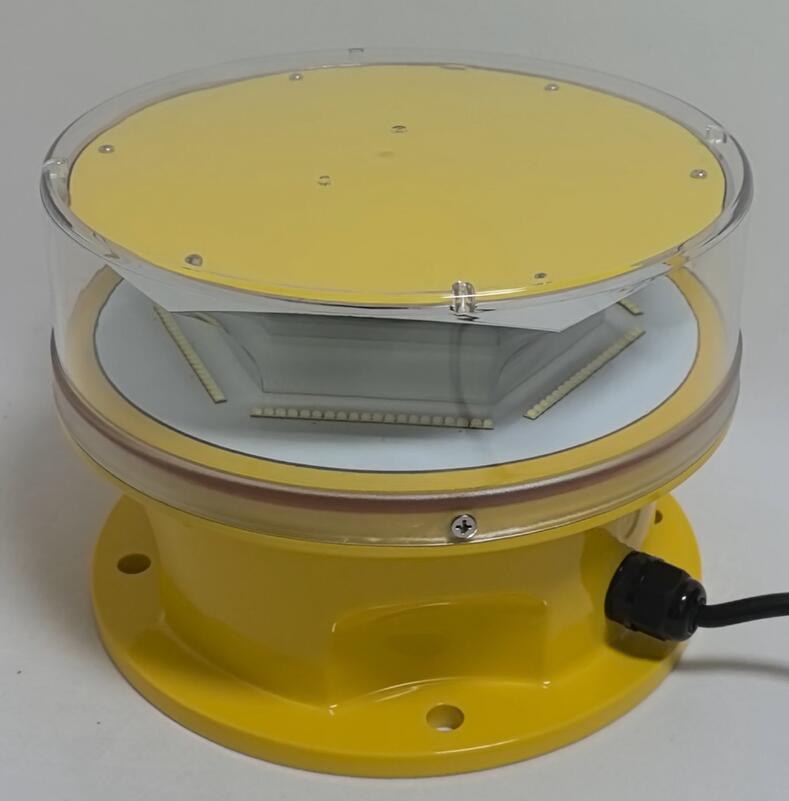Posted: 2025-04-21
As urban landscapes expand and aviation traffic increases, the need for effective tower obstruction lighting systems has never been greater. These specialized lighting solutions play a crucial role in preventing collisions between aircraft and tall structures such as communication towers, wind turbines, and skyscrapers. This article explores the importance, functionality, regulatory standards, and technological advancements of tower obstruction lighting systems, highlighting their role in modern aviation and infrastructure safety.
The Critical Role of Tower Obstruction Lighting Systems
Tall structures pose significant risks to low-flying aircraft, especially during nighttime or adverse weather conditions. Tower obstruction lighting systems serve as visual warnings, ensuring that pilots can identify and avoid potential hazards. Key applications include:
Telecommunication Towers – Ensuring visibility for aircraft in flight paths.

Wind Farms – Marking turbine clusters to prevent collisions.
High-Rise Buildings – Complying with aviation safety regulations in urban areas.
Bridges and Power Lines – Enhancing visibility for helicopters and small aircraft.
Without these systems, the risk of mid-air collisions and structural damage would increase dramatically.
How Tower Obstruction Lighting Systems Work
These systems are designed to provide maximum visibility while minimizing energy consumption. Their key components include:
LED Beacons & Strobe Lights – High-intensity flashing lights for long-distance visibility.
Steady-Burning Red Lights – Used for nighttime obstruction marking.
Automatic Light Sensors – Adjust brightness based on ambient light conditions.
| Tower Obstruction Lighting Systems |
Redundancy Systems – Backup power and fail-safe mechanisms to ensure continuous operation.
Regulatory bodies such as the FAA (Federal Aviation Administration) and ICAO (International Civil Aviation Organization) mandate specific lighting configurations based on structure height and location.
Regulatory Standards and Compliance
To maintain aviation safety, tower obstruction lighting systems must adhere to strict guidelines, including:
FAA Advisory Circular 70/7460-1L – Specifies lighting requirements for different structure types.
| Tower Obstruction Lighting System |
ICAO Annex 14 – Provides international standards for aerodrome and obstruction lighting.
IEC 61400-24 – Covers wind turbine lighting specifications.
Non-compliance can result in penalties, increased liability, and heightened accident risks.
Advantages of Modern Tower Obstruction Lighting Systems
Enhanced Safety – Reduces collision risks for both manned and unmanned aircraft (drones).
Energy Efficiency – LED technology lowers power consumption while maintaining high visibility.
Durability – Weather-resistant designs withstand extreme temperatures, wind, and corrosion.
Remote Monitoring – IoT-enabled systems allow real-time diagnostics and maintenance alerts.
Scalability – Modular designs support easy upgrades for evolving regulations.
Emerging Technologies and Future Trends
The future of tower obstruction lighting systems is evolving with innovations such as:
Smart Lighting Controls – AI-driven adjustments based on real-time weather and air traffic.
Solar-Powered Solutions – Reducing grid dependency for remote installations.
Radar-Activated Systems – Lights that activate only when aircraft are detected.
Dual-Lighting Systems – Combining red beacons with white strobes for better visibility.
As drone usage grows, these systems will become even more critical in preventing airspace conflicts.
Tower obstruction lighting systems are indispensable in modern aviation and infrastructure safety. By adhering to international standards and leveraging advanced technologies, they ensure that tall structures remain visible and navigational risks are minimized. As urbanization and air traffic continue to rise, these systems will play an increasingly vital role in protecting both human lives and valuable assets.
In an era of smart cities and autonomous aircraft, tower obstruction lighting systems stand as silent guardians of the skies—ensuring safe passage for all who fly.